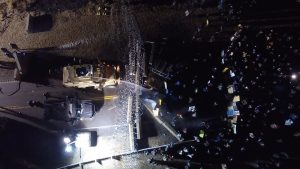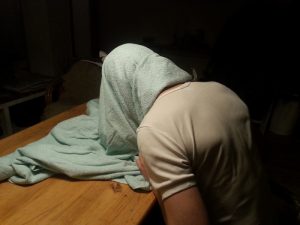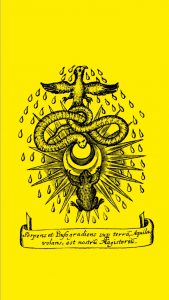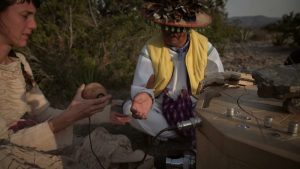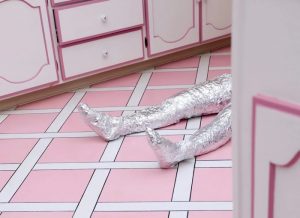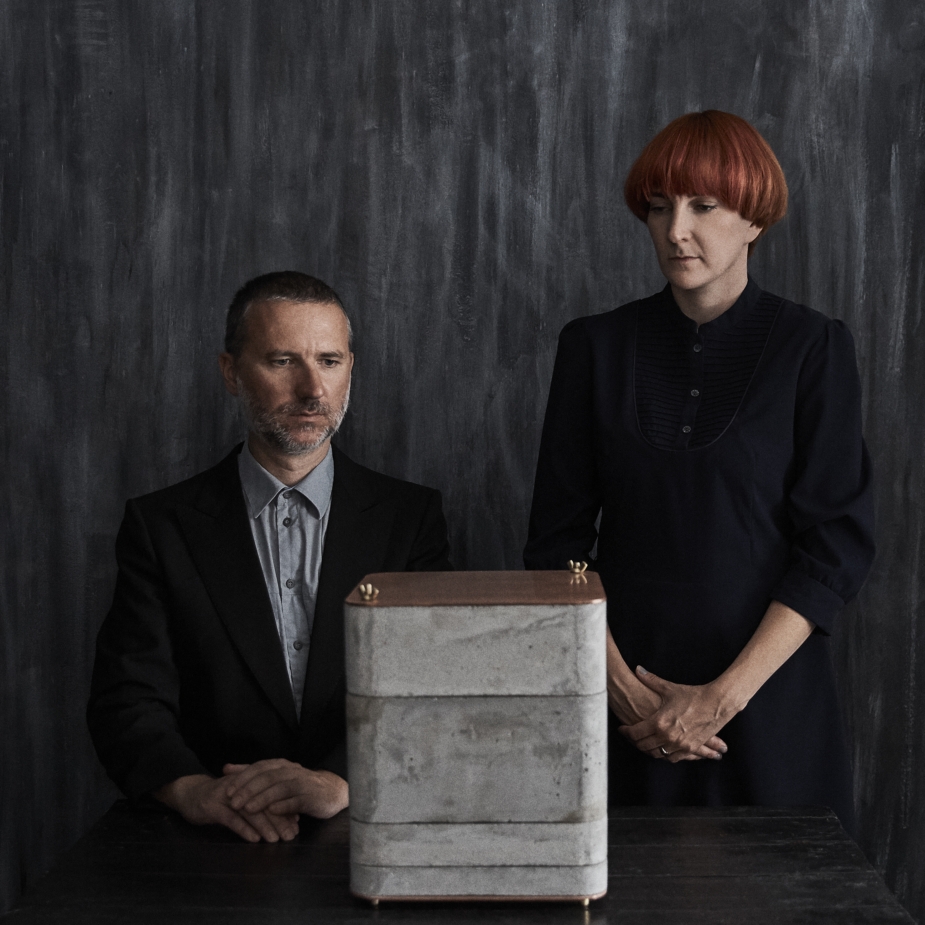
Erich Berger and Mari Keto, INHERITANCE, 2016
If there’s one exhibition i’m dying to see at the moment, it’s Perpetual Uncertainty / Contemporary Art in the Nuclear Anthropocene at Bildmuseet in Umeå. The show brings together artists who respond to our contemporary ‘nuclear age,’ an age punctuated by disasters such as Chernobyl, Fukushima and their far-reaching fallout, marked by continuous nuclear weapon developments, tests and threats but also by long-term storage of radioactive waste.
One of the works in the Bildmuseet exhibition attempts to make sense of the vast timescales involved in the topic. INHERITANCE, by Erich Berger and Mari Keto, is a set of jewelry artifacts made of gold and other precious metals but also of naturally mined Thorianite and Uraninite. The presence of these radioactive stones renders the accessories practically and symbolically unwearable for deep time, until the radionuclide transmute naturally into a stable and non radioactive isotope of lead.
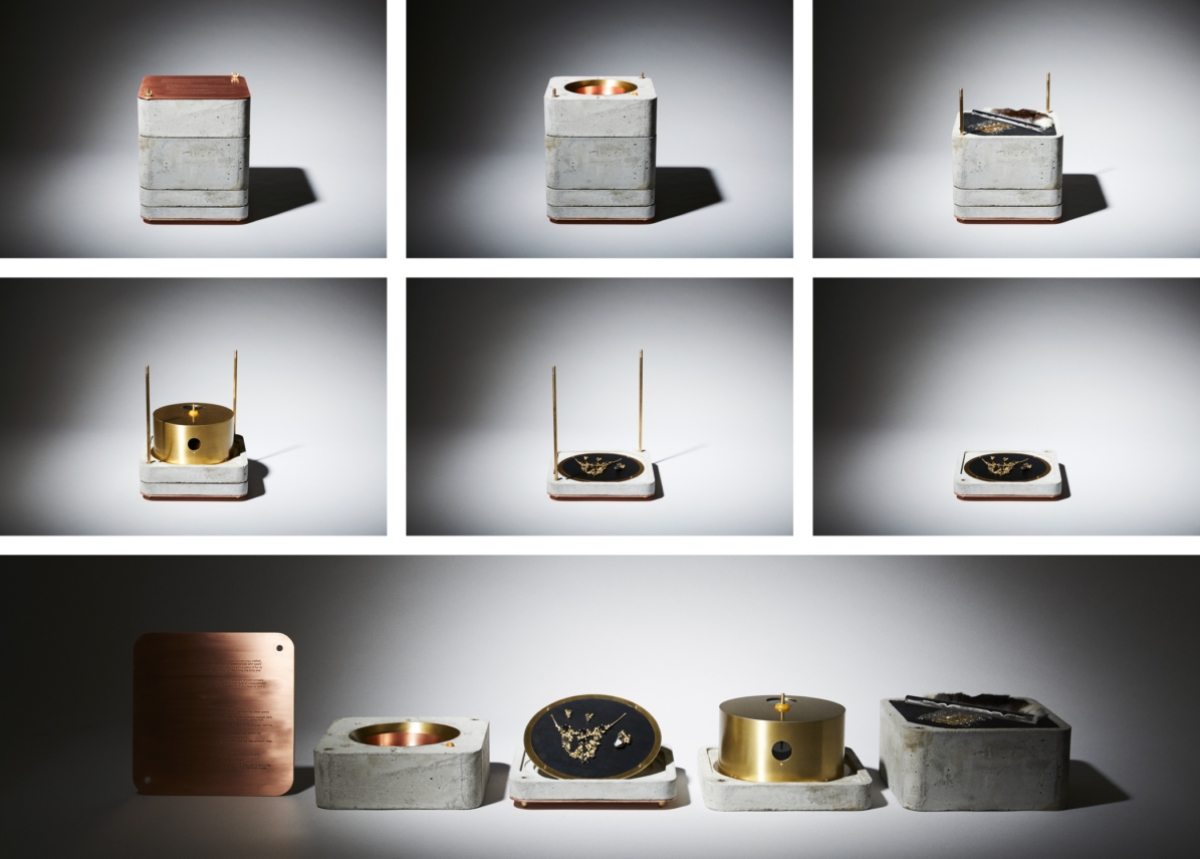
Erich Berger and Mari Keto, INHERITANCE, 2016
The jewellery pieces are kept inside a stackable concrete container which contains a time piece modeled after a Fenjaan water clock (one of the first instruments to measure time), as well as all the instruments necessary to measure and record the amount of radiation remaining in the jewellery: an electroscope, a rod with a piece of fur to electro-statically charge the electroscope, a timer for recording the time as well as instructions that detail the rituals to be performed generation after generation until it is safe to wear the jewellery.
With these artefacts comes also an auto-radiography of the jewellery. An auto-radiography is an image produced when the radioactive energy emitted by an object takes a photo of the object itself.
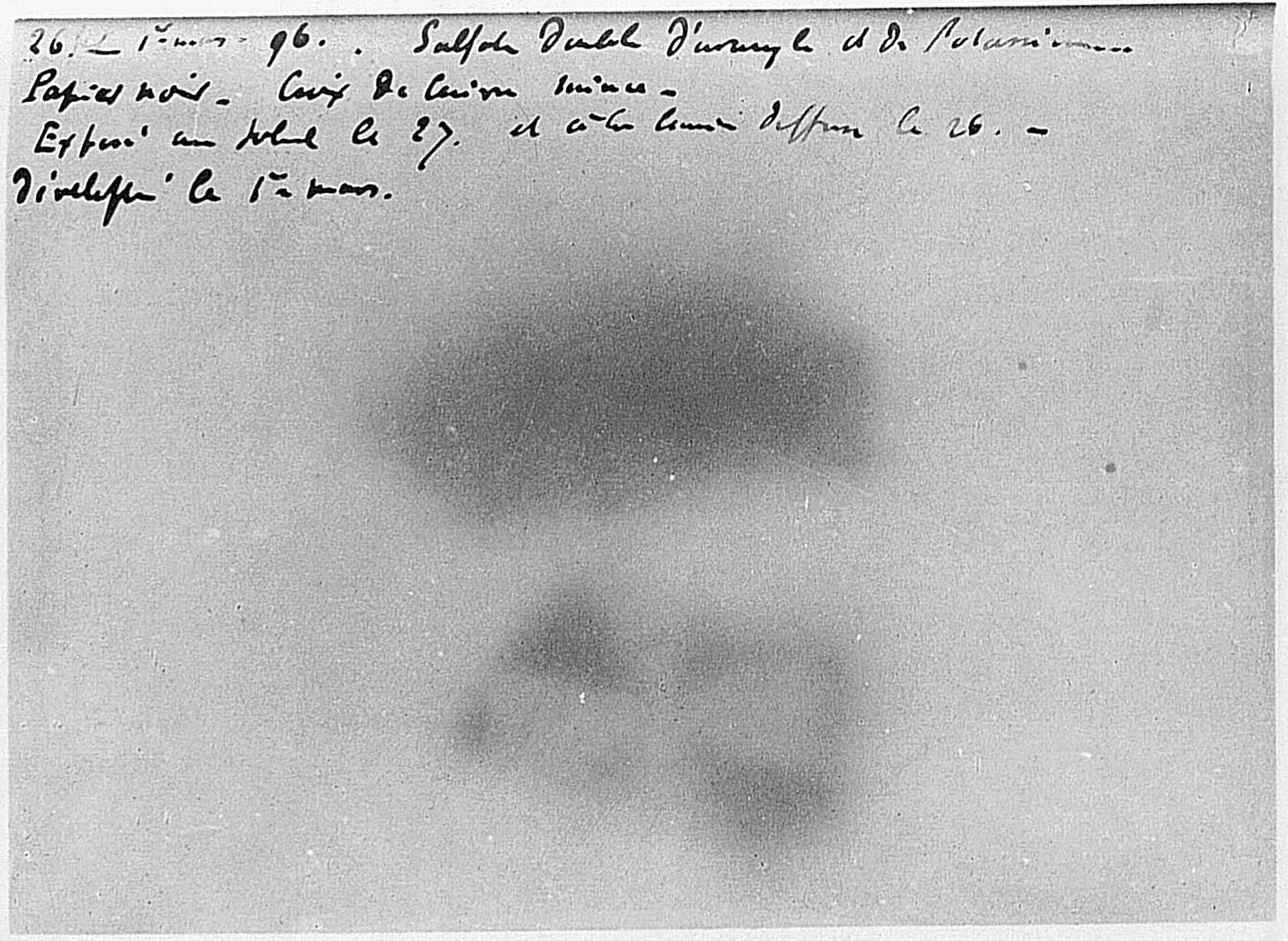
Photographic plate made in 1903 by Henri Becquerel showing effects of exposure to radioactivity
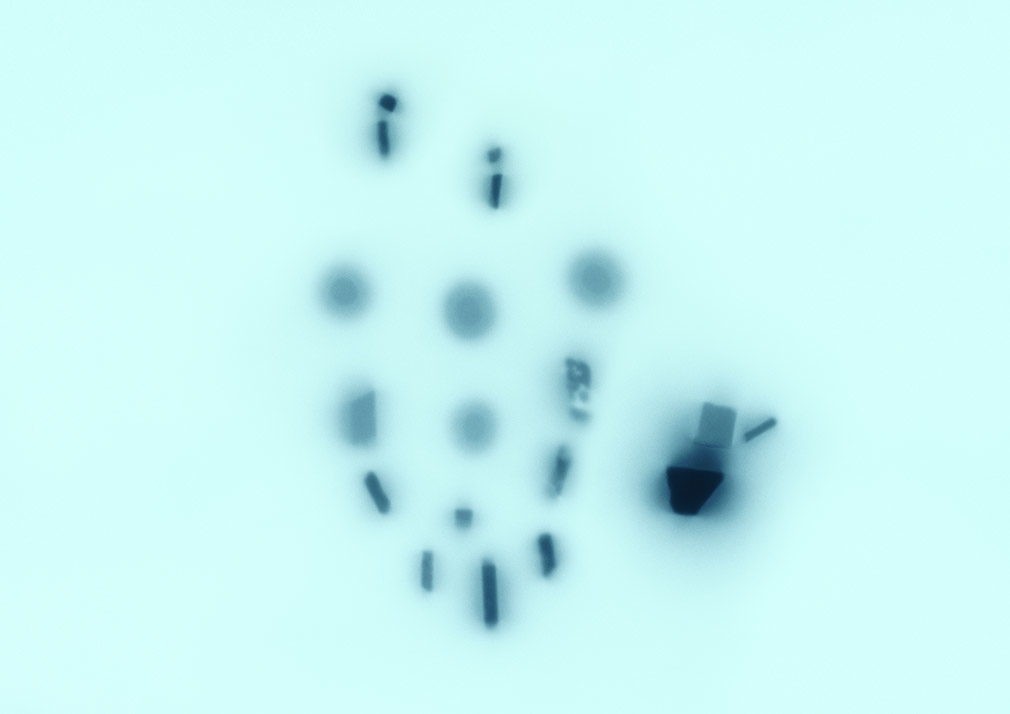
Erich Berger and Mari Keto, INHERITANCE (auto-radiography of the jewellery), 2016
Berger had the idea of engaging with this particular topic after a field trip close to his home in Finland, the first country to build a permanent nuclear waste storage facility. The artist was inspecting the area for techno minerals when he discovered native copper in the bedrock. For the researchers working for the Finnish nuclear waste industry, the sample constituted physical evidence that copper is resistant enough as canister material for nuclear waste in Finnish bedrock.
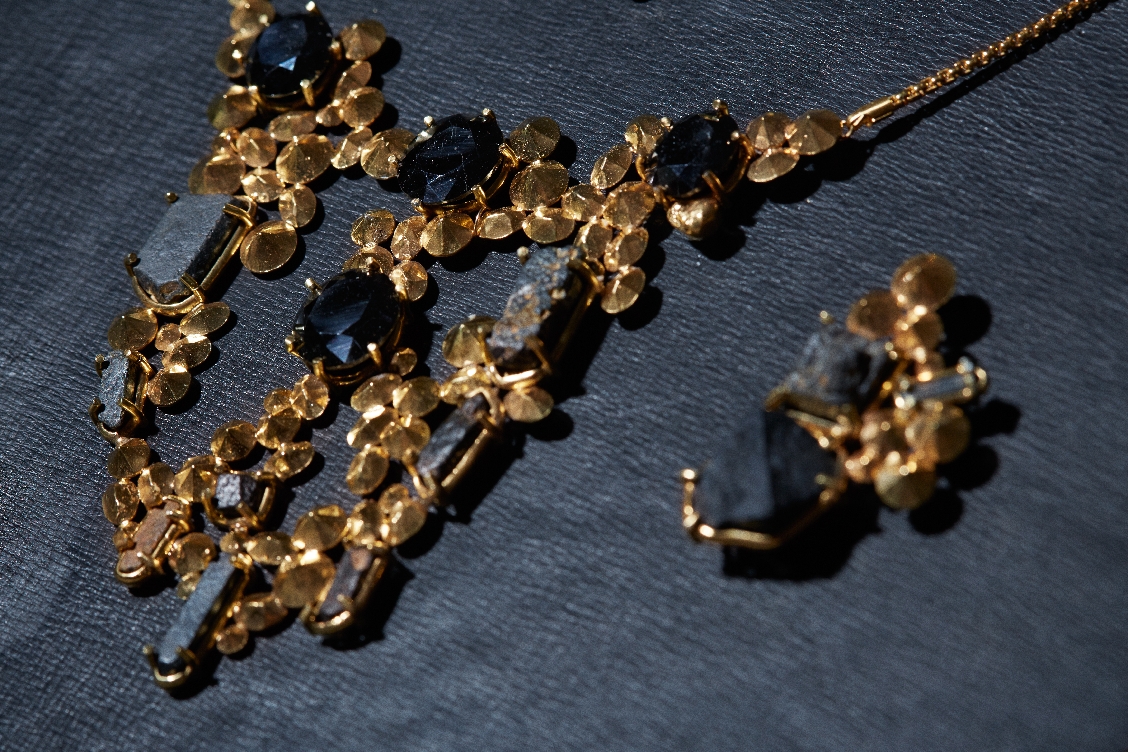
Erich Berger and Mari Keto, INHERITANCE, 2016
INHERITANCE is part of a broader research that looks into the temporal, spacial and economic dimensions of nuclear processes. Nuclear processes (and waste in particular) are particularly difficult to comprehend. They weigh on our existence but remain invisible to us, as individuals and as a society, and they involve timescales so vast, they defy human understanding.
By transferring the issue into a heirloom that is passed on from generation to generation, and shrouded in precise rituals and caring gestures, Berger and Keto make tangible the challenges of a technology that generates energy, constitutes a potential menace and puts us in debt with future generations.
The artists were kind enough to answer my many questions about their work:
Hi Mari and Erich! What guided the aesthetics of the jewellery. Because accessories quickly look outdated. Did you go for something that would look timeless or did you just followed the current taste in accessories?
You are right, jewellery is like many other everyday cultural objects subject to fashion and styles. So when we discussed the aesthetics if the INHERITANCE jewellery we wanted to find something “timeless” or “classical”. We have been looking through a lot of image material on crown jewellery, family jewellery, archaeological findings or high end fine jewellery labels like Tiffany & Co or Dior. We wanted the jewellery to look precious and desirable, of high value, and it should give confidence in its appearance and its promise to bridge into deep futures.
Conceptually we used the idea of family jewellery. It is a rather conservative concept which exists in many cultures and serves both to form and bind family affiliations but also to distribute wealth and identity into the future. As such, family jewellery can be considered as actual vehicles for personal identity and economy into the future.
This is why we used gold together with the radioactive stones to give it the preciousness in the material but the gold also really nicely contrasts the deep black stones. Also the decision to make a set with necklace earrings and brooch in the same style comes from the family jewellery background.
What makes the jewellery so meaningful / valuable that you want to be in contact with potentially harmful objects for more generations than you can count?
Family jewellery is perfect to inverse the logic of nuclear waste. Family jewellery is a vehicle for family identity and wealth into the future. With nuclear waste we in-debt the future and enjoy the (energetic) wealth in the present. We ask ‘What do we leave behind – what will the future inherit from us?’
Many attempts are made by artists or designers to scale the vastness and inhuman complexities of issues like nuclear waste or climate change to suit human experience. But shouldn’t we rather head in the opposite direction: Art scaled to the scope of the real and not reality down-sampled toward the digestible – a sentence borrowed from Benjamin Bratton. Bratton talks about speculative design but we think this can be easily addressed towards the arts as well.
Also why did you decide use materials that do emit radiation? Why was it important to you that the work wasn’t ‘fake’?
We discussed the use of actual radioactive material a lot but from the very beginning we knew that the story of the work only can unfold if we stay true to the materiality of the subject we wanted to talk about.
We think that if we as artist use materials to tell or evoke a story then it only comes to life if the materials are real and impose their materiality on the viewer, be it now the gold or the radioactivity of the stones. There would be no transcendence of the story without the realisation that one is actually never be able to wear it. But not only the jewellery is really radioactive, also the accessories for measurement are not faked and all is in working condition. It could start its journey into Deep Futures any moment if someone would be interested in taking the work into family care.
Why the need of a dry day to perform the ritual?
Because the electroscope measurements would be distorted when the humidity is too high. Humid air makes the electroscope discharge much faster.

Erich Berger and Mari Keto, INHERITANCE, 2016
What are the natural radionuclide you used for this work?
The work uses natural crystals of Thorianite (ThO2) from Mogok, Myanmar, THORITE – (Th, U)SiO4 from Behera/Madagascar and Uraninite (UO2) from Shinkolobwe, Democratic Republic of the Congo.
Was the museum never worried about exhibiting such a piece?
We all were/are cautious about the radioactivity but took good care and made all necessary precautions during the production. One should not forget that the radioactive materials we use are not illegal as they are naturally occurring. It is more a question of exposure, which is a question of distance and time. It was very important for us, curator Ele Carpenter and the Bildmuseet that the work will be legally exhibited and self evidently will cause no harm to the visitors. Specifically important for us was that the work will not draw attention for the wrong reasons as it would easily overwrite our primary intentions. We had an intense dialogue and process and several radiological assessments to arrive at the conditions under which the work can be exhibited. In our case under a vitrine and at a viewing distance of at least 60 cm, but this was all very exciting and everybody involved wanted it to succeed and was very helpful and cautious. The same counts for the transport of the work.
The exhibition Perpetual Uncertainty / Contemporary Art in the Nuclear Anthropocene remains open at Bildmuseet in Umeå, Sweden until 16 April 2017. Check out Kunstkritikk for a comprehensive review of the show.
Related project: POLSPRUNG by Erich Berger.

